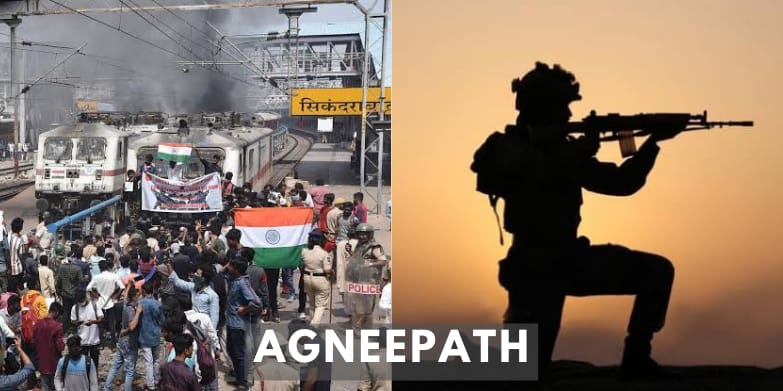There are several opinions on whether the Agneepath scheme is beneficial or not, but before forming opinions ourselves, let’s find out what exactly it is.The Agneepath scheme introduced by the government of India is for the recruitment of soldiers below the rank of commissioned officers into the tri-service of the armed forces; the Navy, Army, and Air Force. Those between 17.5 to 21 years (with the year 2022-23 being an exception of 23 years as the upper age limit) can apply as a recruit, and become known as an Agniveer.
Roughly about 46,000 to 50,000 Agniveers recruited each year will serve for four years and 25% of each batch would be selected for a permanent post in the Armed Forces, who can serve for a full term in the forces. In a nutshell, that is the Agneepath scheme.
The nation will be greatly impacted by this scheme in the coming days and especially considering the fact that there are no chances or questions of rolling back the scheme, it will be affected long-term too. Although it is said by the Chief of Army Staff General, Manoj Pande, that there will be positive changes and tweaks made in the scheme, the entire idea and aims of the scheme must be taken into consideration as it will probably not change overall.
The country gets many benefits such as a more patriotic and disciplined youth, leaner and younger armed forces, reduced pension burden, and so many more, but do the Agniveers themselves get more benefits than drawbacks, or is it just the opposite is the puzzling question, indeed a concern for many, yet this scheme is considered a golden opportunity for the future citizens of India. The youth can serve the nation, perform with patriotism, and become Agniveers, which is considered a separate ranking and is given quite some importance especially when it comes to things like loans, profiles as well as job opportunities.
Regarding the nation, benefits include an increase in employment, defense strengthening, less budget required for the military as well as not having a pension burden for the same. But the real question to ask is- is it worth decreasing the monetary burden when so much effort is being put into training 75% of each batch of Agniveers who will not be recruited for a permanent post? So in the long term, this may not be an efficient act as the loss is not exactly compensated in any other form. And coming to the 75% of Agniveers not selected for the permanent post, most of them will probably not hold a degree, as we know by looking at the age requirements. So, if they are not selected to serve the full term, it is highly difficult to be employed and due to this massive unemployment in the future, there are chances of the capacity of the economy decreasing due to less labour.
Since it is also said that there will be fitter youth, the government might not have to spend as much on healthcare in the coming days and have no issue with employment in the short-run. And since the Agneepath scheme allows women, it encourages women at work, which is a good thing.
Now let’s take a look at the youth; this scheme includes so many pros yet many cons for them. A lot of the Agniveers most probably do not have a higher qualification than a high school graduation, so if they do not get selected for a permanent post, there is really no chance for plan B. This could be too difficult for many, so the crime rate may spike up. And if there is a backup such as doing a second job while training, this might result in an inefficient preparation, and create a different kind of youth than intended for the forces. But that’s not the only side to look at, it comes with many benefits such as having a 10% reservation of posts in the Home and Defence ministries for Agniveers as promised by the union government. And there are many more pros such as a more value-added profile for jobs. And of course, the armed forces will benefit from youth as they are more in touch with the latest technology. As a matter of fact, due to the reason that a great number of youth is joining, the average age would drop from 32 to 26. That’s indeed a great advantage for the tri-services. But again, we must consider the kind of technology the youth is in touch with, and the kind of technology the armed forces use.
Looking at the positive sides of this scheme, it is a win-win situation for India, the armed forces, and the youth. But overall, it looks like a 50%-benefits and 50%-drawback situation for the country, and is truly a double-edged sword.

